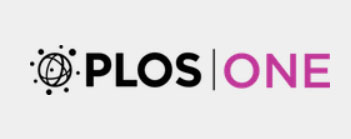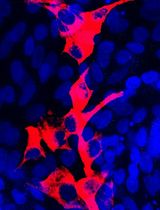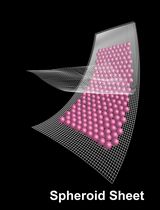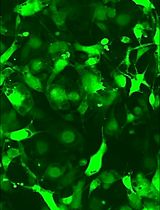- EN - English
- CN - 中文
Isolation of Multipotent Mesenchymal Stem Cells from Human Extraocular Muscle Tissue
人眼外肌组织多能间充质干细胞的分离
发布: 2019年02月20日第9卷第4期 DOI: 10.21769/BioProtoc.3167 浏览次数: 7207
评审: Pengpeng LiYuanfan ZhangAnonymous reviewer(s)
Abstract
Mesenchymal stem cells (MSCs) have attracted significant attention as potential therapeutic cells to treat various diseases ranging from tissue injuries, graft versus host disease, degenerative diseases and cancer. Since the initial discovery of MSCs in the bone marrow cells, MSCs have been successfully isolated from various adult and neo-natal tissues, albeit the procedures are often coupled with difficulties in harvesting tissue and produce low yield of cells, requiring extensive expansion in vitro. Here, we explored extra-ocular muscle tissues obtained from patients as a novel source of MSCs which express characteristic cell surface markers of MSCs and show multilineage differentiation potential with high proliferation capacity.
Keywords: Mesenchymal stem cells (间充质干细胞)Background
Mesenchymal stem cells (MSCs) were originally identified as plastic adherent, fibroblastic cells derived from bone marrow and showed multi-lineage differentiation potential (Friedenstein et al., 1974a and 1974b). Over the years, MSCs have been implicated to play a role in a wide range of biological processes such as hematopoiesis (Friedenstein et al., 1974a), immune-modulation (Klyushnenkova et al., 2005; Crop et al., 2010), tissue repair, angiogenesis, tumorigenesis (Yagi and Kitagawa, 2013) and chemoresistance (Kumar et al., 2017). MSCs possess a vast secretome and have been heralded as factories of extracellular vesicles and “injury drug store” (Caplan and Correa, 2011) for their ability to produce a myriad number of growth factors and cytokines. The secreted factors of MSCs were found to have roles in tissue repair of renal (Grange et al., 2014; Zhang et al., 2014), neural (Koc et al., 2002; Zappia et al., 2005), liver (Li et al., 2013), lung (Lee et al., 2012), myocardial (Timmers et al., 2008; Bian et al., 2014) as well as ischemic injuries (Zhang et al., 2012). Therefore, MSCs are being explored as a therapeutic option for ameliorating various diseases such as myocardial infarction, respiratory disorders, Crohn’s disease, graft versus host disease, diabetes, bone disorders, as well as liver cirrhosis (Uccelli et al., 2008; Battiwalla and Hematti, 2009; Luk et al., 2015).
Cells with similar properties of bone marrow derived MSCs (BM-MSCs) have since been isolated from placenta, amniotic fluid (Tsai et al., 2004), umbilical cord blood (Bieback et al., 2004), mobilized peripheral blood, adipose tissue (Kim et al., 2013), connective tissue, skeletal muscle (Young et al., 2001), dental (Gronthos et al., 2000), fetal tissue (Shin et al., 2009) and extra-ocular muscle tissue (Mawrie et al., 2016). This protocol explores extraocular muscle as a novel source of MSCs which is generally excised and discarded during strabismus correction surgery. Strabismus surgery is the third most common eye surgery in US with up to 1.2 million cases per year. The incised tissue is discarded after procedure, which can be used as a source of MSCs. Extraocular muscles are unaffected during Duchenne's muscular dystrophy (Kaminski et al., 1992; Khurana et al., 1995) and contain 15 times more side population stem cells than skeletal muscle (Pacheco-Pinedo et al., 2009). The extraocular muscle derived MSCs (EOM-MSCs) expressed CD73, CD90 and CD105 (Mawrie et al., 2016) which are characteristic cell surface markers for MSCs (Dominici et al., 2006) and could differentiate into all the three meseodermal lineages (Mawrie et al., 2016). Moreover, EOM-MSCs are relatively easy to isolate, have high proliferation capacity, neuroectodermal differentiation potential and might be a good candidate for stem cell based therapy for treating neurodegenerative disorders (Mawrie et al., 2016).
Materials and Reagents
- Bio-hazard waste container (Tarsons, catalog number: 583254)
- Cell culture dish, 35 x 10 mm (Eppendorf, catalog number: 0030700112)
- Cryo-vials (Tarsons, catalog number: 523182)
- Cryo-tags (Tarsons, Cryo-babies, catalog number: 526070)
- FACS tubes (Corning, catalog number: 352063)
- Graduated centrifuge tubes, 15 ml (Tarsons, catalog number: 546021)
- Graduated centrifuge tubes, 20 ml (Tarsons, catalog number: 546041)
- Graduated 20 μl micro-tips (Tarsons, catalog number: 521000)
- Graduated 200 μl, 1,000 μl micro-tips (Thermo Fisher Scientific, catalog numbers: 90030100, 90030210-P)
- Tissue culture treated, flat bottom 96-well plate (Eppendorf, catalog number: 6030730119)
- Whatman filter paper (Whatman, catalog number: 1001 125)
- 10 ml serological glass pipettes (Himedia, catalog number: CG316-1x10NO)
- Aseptic Petri dish (Tarsons, catalog number: 460051)
- Sterile filtration unit (0.22 μm) (Thermo Fisher Scientific, catalog number: 450-0020)
- Antibodies (Table 1)
Table 1. Antibody detailsS. No. Marker Antibody Manufacturer Dilution Amount added per 50 μl of FACS buffer 1. CD29 Anti-human CD29 PE BD Biosciences, catalog number: 555443 1:100 0.5 μl 2. CD34 Anti-human CD34 FITC Thermo Fisher Scientific, catalog number: CD3458101 1:100 0.5 μl 3. CD44 Anti-human CD44 FITC BD Biosciences, catalog number: 555478 1:100 0.5 μl 4. CD49e Anti-human CD49e PE BD Biosciences, catalog number: 555617 1:100 0.5 μl 5. CD73 Anti-human CD73 PE BD Biosciences, catalog number: 550257 1:100 0.5 μl 6. CD90 Anti-human CD90 FITC BD Biosciences, catalog number: 555595 1:100 0.5 μl 7. CD105 Anti-human CD105 PE BD Biosciences, catalog number: 560839 1:100 0.5 μl 8. HLA1 Anti-human HLA1 FITC BD Biosciences, catalog number: 555552 1:100 0.5 μl 9. Isotype control Anti-mouse IgG1 PE BD, catalog number: 556561 1:100 0.5 μl 10. Isotype control Anti-mouse IgG1 FITC BD, catalog number: 554109 1:100 0.5 μl - 10x Trypsin (2.5%) (Thermo Fisher Scientific, catalog number: 15090-046)
- Alizarin Red S (Sigma-Aldrich, catalog number: 199962)
- Ascorbic acid-2-phosphate (Sigma-Aldrich, catalog number: A8960)
- β-Glycerophosphate (Sigma-Aldrich, catalog number: G9891)
- Dimethyl sulfoxide (DMSO) (Sigma-Aldrich, catalog number: D8418-250ML)
- Dexamethasone (Sigma-Aldrich, catalog number: D2915)
- Fibronectin solution (Sigma-Aldrich, Fibronectin human plasma, catalog number: F0895)
- Formaldehyde solution 37-41% (w/v) (Merck, catalog number: 61780805001730)
- Hank’s balanced salt solution (HBSS) (Sigma-Aldrich, catalog number: 55021C)
- IBMX (Sigma-Aldrich, catalog number: I-5879)
- Indomethacin (Sigma-Aldrich, catalog number: I-7378)
- Insulin (Sigma-Aldrich, catalog number: 91077C)
- Isopropanol (Merck, catalog number: 1.07022.2521)
- Oil Red O (Sigma-Aldrich, catalog number: O-0625)
- Potassium chloride (KCl) (Merck, catalog number: 61779205001730)
- Potassium dihydrogen phosphate (KH2PO4) (Merck, catalog number: 60487305001730)
- Propidium Iodide (Sigma-Aldrich, catalog number: P4170)
- Safranin O (Sigma-Aldrich, catalog number: S8884)
- Sodium bicarbonate (Sigma-Aldrich, catalog number: S5761)
- Sodium chloride (NaCl) (Merck, catalog number: 1.93206.0521)
- Sodium dihydrogen phosphate (NaH2PO4) (Merck, catalog number: 61787405001730)
- DMEM-low glucose with L-Glutamine medium (Sigma-Aldrich, catalog number: D2902-1L)
- DMEM-high glucose with L-Glutamine medium (Sigma-Aldrich, catalog number: D5648-1L)
- Fetal Bovine Serum (Thermo Fisher Scientific, catalog number: 10270)
- 100x Penicillin (10,000 Units/ml)-Streptomycin (10,000 Units/ml) antibiotic (Thermo Fisher Scientific, catalog number: 15140-122)
- StemPro chondrogenesis differentiation kit (Thermo Fisher Scientific, catalog number: A10071-01)
- De-ionized water (dH2O) (Merck, Elix Type 2 pure water)
- Trypan blue (Sigma-Aldrich, catalog number: T6146)
- Liquid nitrogen (99.999%)*
- Sodium hydroxide (NaOH) (Merck, catalog number: 61843805001730)
- Hydrochloric acid 35% (HCl) (Merck, catalog number: 61762505001730)
- DMEM medium (see Recipes)
- DMEM-LG (low glucose)/DMEM-HG (high glucose) basal medium
- MSC growth medium
- Tissue collection medium (see Recipes)
- Fibronectin solution (see Recipes)
- Phosphate buffered saline (PBS) (see Recipes)
- 10x PBS
- 1x PBS
- PBS with 1x antibiotic
- 1x Trypsin (0.25%) (see Recipes)
- 0.4% trypan blue (see Recipes)
- Heat-inactivated FBS (see Recipes)
- Freezing media (see Recipes)
- FACS buffer (see Recipes)
- Propidium iodide staining solution (see Recipes)
- Osteogenesis induction media (see Recipes)
- Adipogenesis induction media (see Recipes)
- 4% formaldehyde solution (see Recipes)
- Alizarin red staining solution (see Recipes)
- Oil Red O solution (see Recipes)
- 1% Oil Red O stock solution
- Oil red O staining solution
- Chondrogenic differentiation medium (see Recipes)
- 0.1% Safranin O staining solution (see Recipes)
Equipment
- Cryo-cooler (Tarsons, catalog number: 525000)
- Sterilized sharp-tip forceps and scalpel
- Analytical balance (Sartorius, Quintix Analytical Balance 60, 120 g x 0.01, 0.1 mg)
- Cryogenic cell storage container (International Cryogenics, model: D-2000C)
- Biosafety level 2 cabinet (Thermo Fisher Scientific, model: 1300 series A2)
- CO2 incubator (Thermo Fisher Scientific, Hera Cell 150i)
- Flow cytometer (Becton Dickinson, FACS calibur and BD cell quest software)
- Hemocytometer (Bright line hemocytometer) (Sigma-Aldrich, catalog number: Z359629)
- Inverted microscope with camera (Zeiss, Axio Vert. A1)
- Pipette controller (Socorex, Profiller 446)
- Single-channel pipettes, 0.5-20 μl, 20-200 μl, and 100-1,000 μl (Gilson, Pipetman classic)
- Refrigerated centrifuge (Thermo Fisher Scientific, Sorvall legend X1R)
- Water bath (Thermo Fisher Scientific, Labline water bath)
- Ultra-low temperature freezer (-80 °C freezer) (Thermo Fisher Scientific, Forma 88000 series)
- 4 °C refrigerator*
- -20 °C freezer*
- Autoclave*
*Note: These items can be ordered from any qualified company.
Software
- FlowJo software (FlowJo, LLC)
Procedure
文章信息
版权信息
© 2019 The Authors; exclusive licensee Bio-protocol LLC.
如何引用
Sharma, A., Mawrie, D., Magdalene, D. and Jaganathan, B. G. (2019). Isolation of Multipotent Mesenchymal Stem Cells from Human Extraocular Muscle Tissue. Bio-protocol 9(4): e3167. DOI: 10.21769/BioProtoc.3167.
分类
干细胞 > 成体干细胞 > 间充质干细胞
细胞生物学 > 细胞分离和培养 > 细胞分化
您对这篇实验方法有问题吗?
在此处发布您的问题,我们将邀请本文作者来回答。同时,我们会将您的问题发布到Bio-protocol Exchange,以便寻求社区成员的帮助。
Share
Bluesky
X
Copy link












